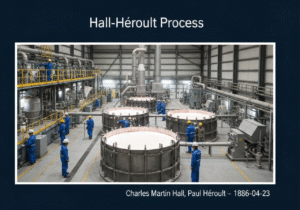To shorten the time it takes to deliver a product or service to a customer.
- Methodologies: Engineering, Quality
Lead Time Reduction

Lead Time Reduction
- Agile Methodology, Continuous Improvement, Customer Experience, Just-in-Time (JIT), Lean Manufacturing, Process Improvement, Product Development, Supply Chain, Value Stream Mapping
Objective:
How it’s used:
- The process of reducing the time it takes from the start of a process to its conclusion. In manufacturing, it is the time from when an order is received to when the product is delivered. In product development, it is the time from when an idea is conceived to when it is launched.
Pros
- Improves customer satisfaction; Increases flexibility and responsiveness.
Cons
- Can be difficult to achieve without a systematic approach; May require significant changes to processes and systems.
Categories:
- Lean Sigma, Manufacturing
Best for:
- Reducing the time it takes to deliver a product or service to a customer to improve customer satisfaction and increase flexibility.
Lead Time Reduction is widely implemented in sectors such as automotive, aerospace, electronics, and consumer goods, where competition necessitates rapid product delivery. This methodology is particularly effective during the design and development phases of a project, where cross-functional teams, including designers, engineers, and supply chain professionals, collaborate to identify bottlenecks and inefficiencies in the workflow. Initiated by project managers or product owners, teams utilize techniques like concurrent engineering, agile methodologies, and value stream mapping to enhance collaboration and communication. One application of this strategy can be seen in the automotive industry, where companies like Toyota have famously adopted lean manufacturing principles to minimize waste and expedite production. The integration of digital tools such as computer-aided design (CAD) and project management software also plays a significant role in reducing lead times, allowing for rapid prototyping and iteration. Industries employing these practices often report improved delivery times and increased customer loyalty as a result of more responsive supply chains, which can adjust to demand fluctuations or design changes with agility. Regular training and workshops on lead time reduction principles ensure that teams remain adaptable and capable of implementing innovative solutions throughout the product lifecycle.
Key steps of this methodology
- Identify bottlenecks and delays within the current process.
- Prioritize areas for improvement based on impact and feasibility.
- Implement lean principles to eliminate waste and streamline workflows.
- Adopt iterative development practices to shorten cycles and enhance adaptability.
- Utilize cross-functional collaboration to enhance communication and speed up decision-making.
- Integrate advanced technologies for automation and real-time tracking of progress.
- Encourage a culture of continuous improvement and feedback loops among teams.
- Measure performance improvement and adjust processes accordingly for further efficiency.
Pro Tips
- Implement cross-functional teams to enhance communication and expedite decision-making processes.
- Utilize rapid prototyping techniques to gather user feedback early and iterate designs quickly.
- Adopt Agile methodologies for continuous improvement and flexibility in product development cycles.
To read and compare several methodologies, we recommend the
> Extensive Methodologies Repository <
together with the 400+ other methodologies.
Your comments on this methodology or additional info are welcome on the comment section below ↓ , so as any engineering-related ideas or links.
Historical Context
1890
1924
1930
1940
1950
1950
1958
1886-04-23
1897
1930
1940
1949
1950
1950
1960
(if date is unknown or not relevant, e.g. "fluid mechanics", a rounded estimation of its notable emergence is provided)















Related Posts
Manufacturing Operations Management (MOM)
Manufacturing Execution System (MES)
Manufacturing Control Plan
Manual Testing
Manual Handling Assessment Charts (MAC)
ManTRA (Manual Tasks Risk Assessment Tool)